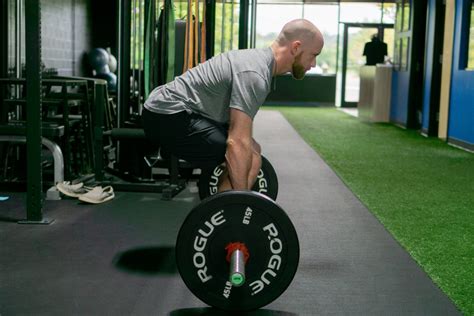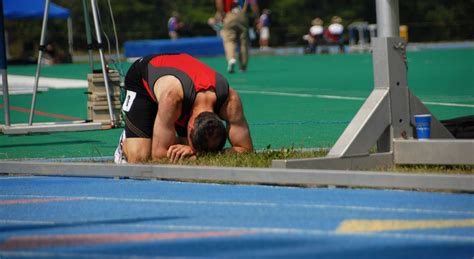Best strategy to overcome a strength plateau for peak performance?

Conquering the Strength Plateau: A Blueprint for Peak Performance
Every dedicated lifter eventually faces it: the dreaded strength plateau. That moment when your numbers stall, progress grinds to a halt, and motivation starts to wane. A strength plateau isn’t a sign of failure; it’s a natural signal from your body indicating that it has adapted to your current stimulus. To continue making gains and achieve peak performance, you need a strategic shift in your approach. This article will outline the best multi-pronged strategy to break through those barriers and propel you forward.

Strategic Training Adjustments: The Core of Progress
Your body is incredibly adaptive, and what worked initially will eventually cease to be effective. To overcome a plateau, you must introduce new challenges.
Refine Progressive Overload
Progressive overload isn’t just about adding more weight. It encompasses several variables you can manipulate:
- Increase Volume: Add more sets or reps while maintaining good form.
- Increase Frequency: Train a muscle group more often, allowing for more exposure to stimulus.
- Vary Rep Ranges: Cycle between heavy, low-rep sets (1-5 reps for strength), moderate-rep sets (6-12 reps for hypertrophy), and higher-rep sets (12-20+ for endurance/conditioning).
- Reduce Rest Times: Shorter rest periods increase the intensity and metabolic demand.
- Time Under Tension (TUT): Slow down your negatives (eccentric phase) or pause at the peak contraction to increase muscle engagement.
- Advanced Techniques: Incorporate dropsets, supersets, rest-pause sets, or forced reps periodically to shock your muscles.
Implement Deloads and Active Recovery
Sometimes, the solution isn’t more, but less. Overtraining can be a significant cause of plateaus, leading to chronic fatigue, impaired recovery, and increased injury risk. A strategic deload week every 4-8 weeks can be immensely beneficial:
- Reduce Volume/Intensity: Lower your working weights by 40-60% or significantly reduce the number of sets/reps.
- Focus on Form: Use the deload to perfect your technique on compound lifts.
- Active Recovery: Engage in light cardio, stretching, foam rolling, or yoga to promote blood flow and aid recovery without adding stress.

Optimizing Recovery and Fuel: The Unsung Heroes
Your muscles don’t grow in the gym; they grow when you recover. Neglecting recovery and nutrition is a sure-fire way to stall progress.
Prioritize Nutrition and Hydration
Your body needs the right building blocks and energy to repair and grow stronger.
- Adequate Protein: Aim for 1.6-2.2 grams of protein per kilogram of body weight to support muscle protein synthesis.
- Sufficient Calories: Ensure you’re in a slight caloric surplus if your primary goal is strength gain, providing enough energy for recovery and growth.
- Micronutrients: Don’t overlook vitamins and minerals from a diverse diet of fruits, vegetables, and whole grains.
- Hydration: Water is crucial for metabolic functions, nutrient transport, and joint health. Drink plenty throughout the day.
Master Sleep and Stress Management
These two elements are often overlooked but are critical for performance.
- Quality Sleep: Aim for 7-9 hours of quality sleep per night. This is when your body produces growth hormone and repairs muscle tissue most effectively.
- Manage Stress: Chronic stress elevates cortisol levels, which can hinder muscle growth and recovery. Incorporate stress-reducing activities like meditation, reading, or spending time in nature.

Beyond the Basics: Form and Function
Sometimes, a plateau isn’t about strength but about efficiency or underlying weaknesses.
Perfect Your Technique
Poor form not only limits your strength potential but also increases the risk of injury. Record yourself, get feedback from experienced coaches, and actively work on refining your movement patterns. A stronger, more efficient movement path allows you to lift more weight safely.
Address Weak Links with Accessory Work
Identify which muscles are failing first in your main lifts. For example, if your lockout is weak on bench press, incorporate triceps extensions. If your deadlift struggles off the floor, focus on glute and hamstring strength. Targeted accessory exercises can shore up these weaknesses, allowing your main lifts to progress.

The Long Game: Periodization and Mindset
Sustained progress requires a long-term vision and a resilient attitude.
Embrace Periodization
Periodization involves structuring your training into cycles (macrocycles, mesocycles, microcycles) with varying intensities, volumes, and specific goals. This systematic approach prevents overtraining, optimizes recovery, and ensures continuous adaptation. For instance, you might have blocks focused on hypertrophy, followed by strength, and then power, before entering a competition or peak phase.
Cultivate a Resilient Mindset
Strength gains are rarely linear. There will be ups and downs. Maintain a positive attitude, celebrate small victories, and stay consistent. Set realistic goals, track your progress meticulously, and learn to be patient. Believe in your ability to adapt and overcome.

Conclusion
Overcoming a strength plateau for peak performance is not about finding one magical solution, but rather implementing a holistic strategy that addresses training, recovery, nutrition, and mental fortitude. By systematically varying your progressive overload, integrating strategic deloads, prioritizing sleep and proper nutrition, perfecting your technique, and adopting a long-term, periodized approach, you can break through any barrier and continue on your path to unprecedented strength and fitness. Listen to your body, be adaptable, and stay consistent – your next breakthrough awaits.







